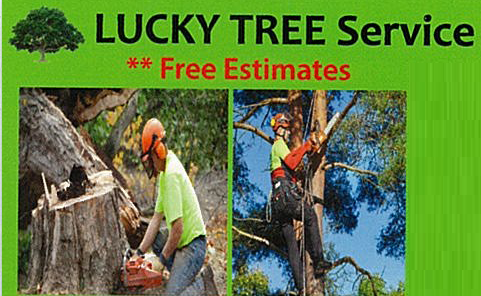CA
ON
토론토 기쁨이 충만한 교회
전화: 416-663-9191
1100 Petrolia Rd Toronto, ON

럭키 여행사
전화: 416-938-8323
4699 keele st.suite 218 toronto Ontario M3J 2N8 toronto, ON

호남향우회 (토론토)
전화: 647-981-0404
7 Bishop Ave. #2411 Toronto, ON

준비된 바이어 그룹 , BAYTREE 이너써클
전화: 416-226-5999
7030 Woodbine Ave. Suite 103 Toronto, ON

고려 오창우 한의원
전화: 416-226-2624
77 Finch Ave W #302, North York Toronto, ON

한인을 위한 KOREAN JOB BANK
전화: 6476245886
4065 Chesswood Drive Toronto, ON
.jpg)
싸인건설
전화: 416-909-7070
4065 Chesswood Dr. North York, ON
0.jfif)
조준상 (로열르페이지 한인부동산 대표)
전화: 416-449-7600
1993 Leslie St. Toronto, ON

최고의 POS시스템 - 스마트 디지탈 POS
전화: 416-909-7070
4065 CHESSWOOD DR. NORTH YORK Toronto, ON
0.jfif)
토론토 민박 전문집
전화: 416-802-5560
Steeles & Bathurst ( Yonge) Toronto, ON

변호사 정찬수 법률사무소
전화: +82 2-536-1144
서울특별시 서초구 서초동 Toronto, ON
1.jfif)
럭키조경 & 나무자르기
전화: 647-564-8383
4699 Keele St. Unit 218 Toronto, ON

블로그 ( 오늘 방문자 수: 8 전체: 143,318 )
Stick Buying Guide
kciha
2005-09-09
Stick Buying Guide
By Andrew Westby
So ya need a war club eh? If you have been checking out your local hockey shops or the internet for a new stick you’ve probably noticed that there are a lot of different options when it comes to what used to be a real simple hunk of wood. This guide is intended to make the process a little easier. Below you will find the four main types of sticks with brief explanations about the pros and cons of each as well as a few terms that you should be familiar with when considering sticks.
The Lingo
Before you buy a stick you should be familiar with a few terms. Recently a few new terms have been added to the vocabulary of hockey and I’ll do my best to explain them all to ya.
Flex: Flex is a relatively new term in the hockey world. Flex is generally reserved for composite shafts and 1 piece composite sticks. The Flex number is usually printed on the top of the shaft and ranges anywhere from 45 in junior sticks to 110 in seniors. The Flex number indicates how much force is required to bend the shaft . The higher the number the stiffer the stick. Officially the definition goes something like this:
"Using a tip and end flex system similar to the golf shaft flexing test, the shaft is flexed by a pneumatic piston generating a force necessary to deflect a set distance." For example a 100 flex stick may require 12.45 lbs of force to deflect the required distance and an 85 may only require 9.50 lbs.
Unfortunately, I have no idea what that means in English. The concept is pretty simple though. A stick with a 100 flex rating will be much stiffer then a stick with a 75 flex rating. A stiffer stick will give you an extra explosive snap on your shot compared to a stick with a lot of give in it. A stiff stick will require much more arm strength to take full advantage of, than a stick with more flex in it. A stick with a lower flex rating will have a quicker release. It all depends on the style of hockey you play. Wood sticks usually don? have a flex rating on them but for the most part they will be much more flexible then composite or aluminum sticks.
Lie: The lie determines the angle that the blade extends from the shaft of the stick. Lie can range from 2-7. A stick with a low lie number will look more like an “L” then a stick with a high lie number which will have the shaft much more reclined when the stick blade is flat on the ice.
Curve: When looking at sticks the thing you will have the most options on are blade curves. Stick blades are curved to varying degrees in order to give shooters a more accurate shot. Curves can occur anywhere on the blade. A heel curve is a curve that starts close in to the base of the blade while a toe curve starts further out towards the end.
Generally when looking at sticks the curve will be represented by a professional players name. The Mission M1 Gaborik for example uses the same curve that was designed for the Minnesota Wild super star Marian Gaborik but the M1 is also available in a Carter curve and a Cole curve. Same stick, different curve.
*IMPORTANT* When looking at curves on sticks it is important to point out that not all stick curves are legal. Most leagues follow the NHL rule when it comes to stick curve.
“The curvature of the blade of the stick shall be restricted in such a way that the distance of a perpendicular line measured from a straight line drawn from any point at the heel to the end of the blade to the point of maximum curvature shall not exceed one-half inch."
Violation of the stick curve rule can result in a two minute minor for unsportsman-like conduct. This rule is generally only used in really important games when a the opposition is in trouble so make sure you don’t end up being the dunce who costs your team the big game (Example: Marty McSorley of the LA Kings in the 1993 Stanley Cup finals vs. the Montreal Canadians got caught with too much curve and cost his team the game and possibly the cup when the Canadians successfully challenged his stick curve).
Loft: A stick blade not only has a curve measurement but it also has loft as well. Loft is the angle that the blade tilts back.
Toe: A common term for the end of the blade is “toe.” The toes on sticks vary quite a bit. Defenseman for the most part play with a more squared off toe for maximum blocking space. Offensive minded stick handlers traditionally use a more rounded toe.
Hosel: Com'on everybody say it with me! Hosel! Quite possibly the most entertaining word in hockey, the hosel is the part of the blade that goes into the shaft on a 2 piece stick. Hosel’s are generally about 2-3 inches long and most come with glue dried on for easier installation (to see how to heat and install new blades check out the blade replacement tutorial). Hosels (like just about every other part of a hockey stick) come in a variety of materials but generally are made from composites or a stronger wood. It is important to point out that there are different sizes of Hosels. Junior shafts should only be mated with junior blades and senior shafts should only be mated with senior shafts. (Note: It is possible to file down a senior hosel to fit a junior shaft but we don’t recommend it because, A: the fit will not be as snug as a proper sized blade and, B: manufacturers of more expensive blades and some shafts will void any warranty that you may have had on them when any part of the stick is modified).
Plug: The plug is a piece of wood that is inserted at the top of hockey stick shafts on composite 1 piece sticks and on 2 piece sticks. The plugs primary function is to provide a place where the stick can be safely cut down to suit a player’s height preference without damaging the stick’s composite or aluminum material. More often then not the plug won’t be visible because it usually gets taped over with grip tape.
Paddle: The paddle is a goaltender specific term that refers to the wide part of the blade that extends up the shaft. The paddle provides an additional blocking surface that regular sticks don’t have.